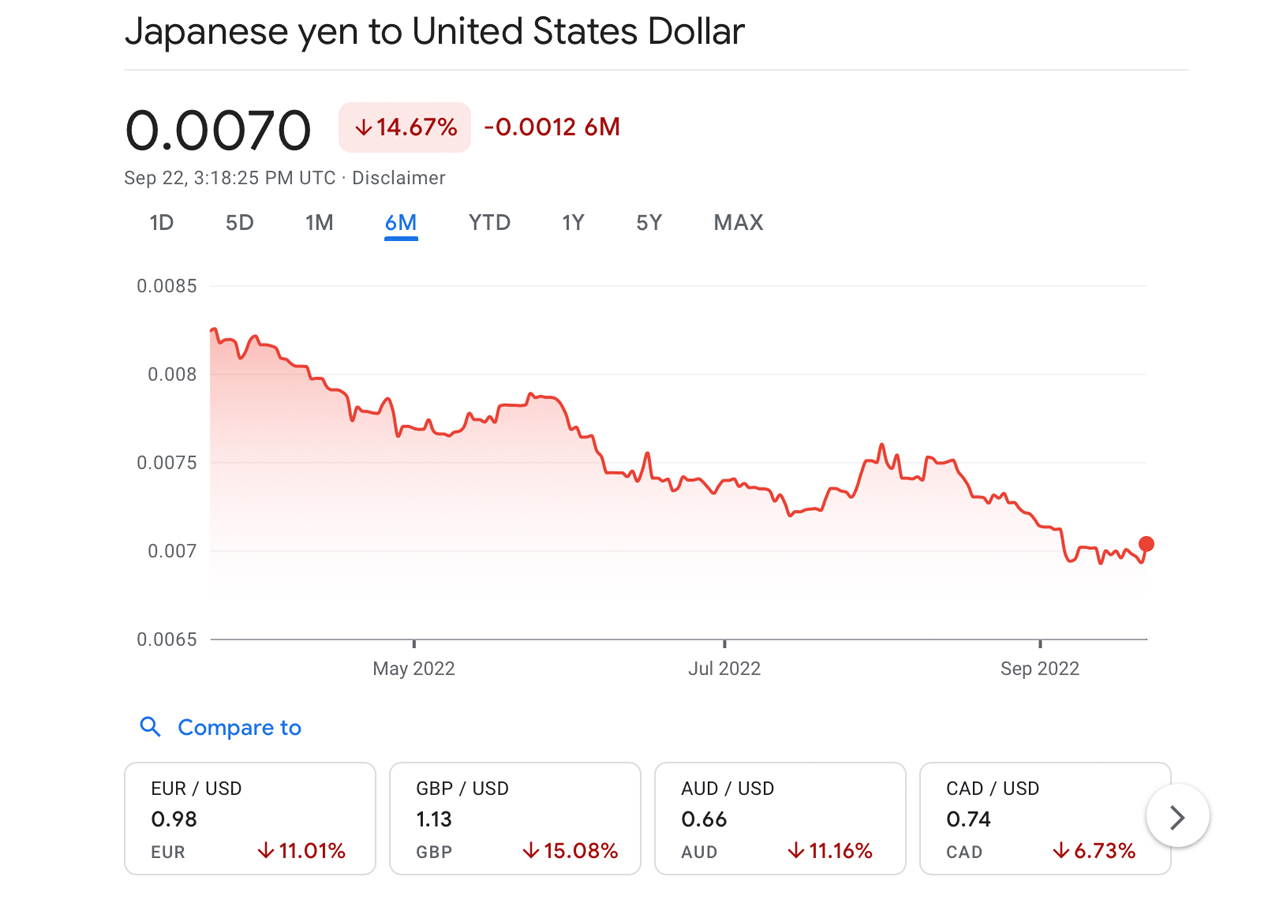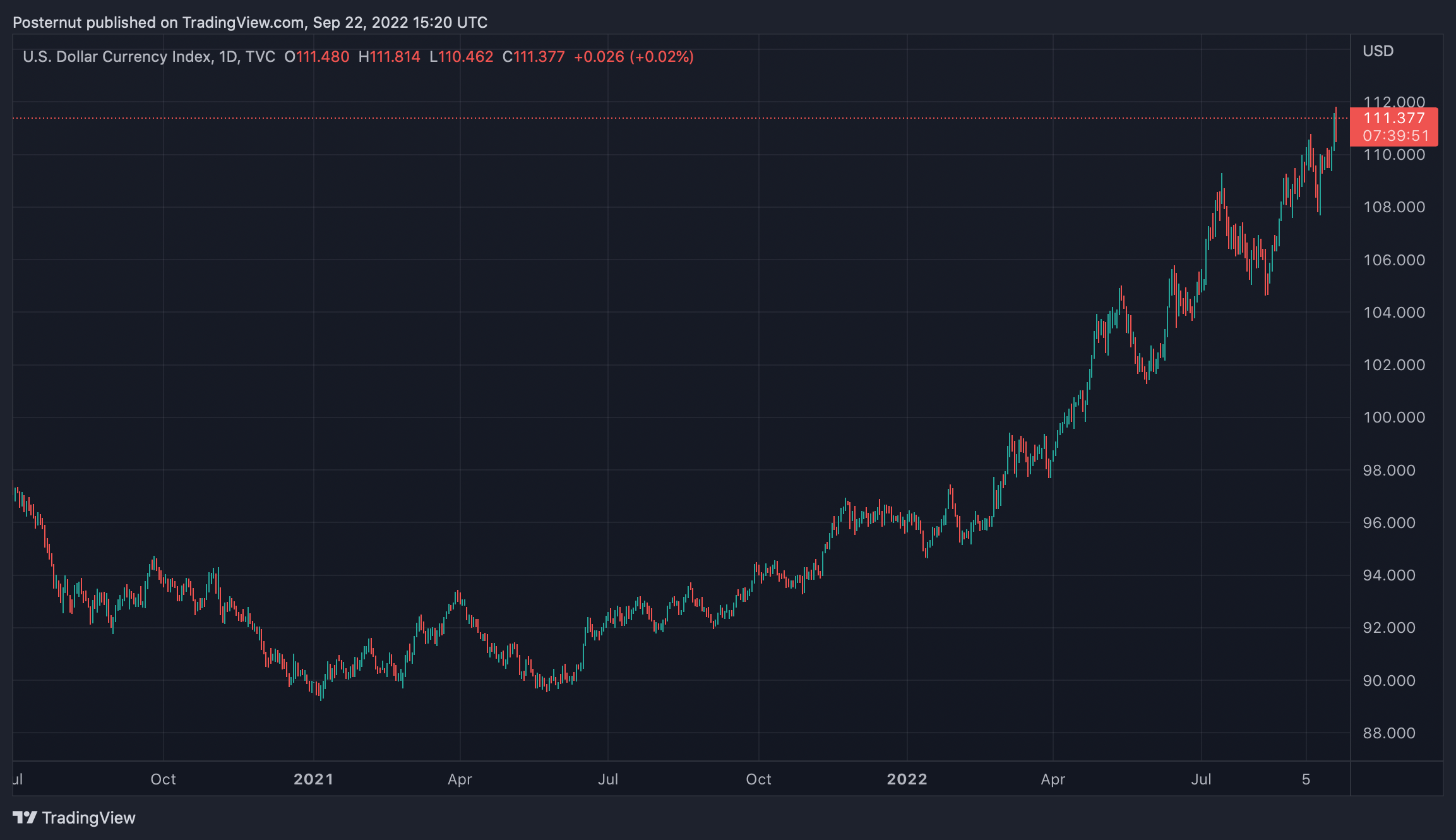
The greenback continues to rise higher while the Japanese currency has tapped a 24 year low. Japan then decided that it would intervene on foreign exchange markets since 1998. According to reports, the Bank of Japan carried out the first forex intervention since 1998. This was after the Japanese central banks had kept the benchmark rate low for quite some time. Following the intervention, the yen rallied as the U.S. dollar took a steep dive against the Japanese yen during Thursday’s trading sessions. However, the greenback has stepped back up to the plate and the yen’s recent gains are starting to waver.
Yen’s Struggle Causes Bank of Japan to Step Into the Buy-Side of Forex Markets for the First Time in Over 2 Decades
While the U.S. Dollar has always been an important player in the world of fiat currencies, the Japanese yen recently reached a 24 year low that prompted the Bank of Japan’s intervention. Reuters revealed that the Japanese central banks intervened in the forex market for the first time since 1998. This was to revive the declining currency. The Bank of Japan has already sold the yen in 2011 using physical intervention techniques. This marks the first buy-side intervention.

After the intervention, however, the Japanese currency soared. Exchange rate JPY/USDThe yen has been remarkably weak against the greenback in the past six months, as evidenced by the chart below. Speaking with marketwatch.com author Steve Goldstein, Michael Hewson, the chief markets analyst at CMC Markets U.K., is questioning the yen’s long-term decline.
“The big question is whether it will make a difference and change the long-term direction of the Japanese yen’s decline,” Hewson detailed on Thursday. “The 145/146 level does appear to be a level the Bank of Japan seems keen to defend at the moment given that last week’s rate check happened around similar levels.”
Chinese Yuan, EU’s Euro, and Many Other Fiat Currencies Take a Beating from the Robust Greenback — Yen’s Intervention Gains Start to Erode
Not only is the yen in decline, but also the Chinese currency has been depreciating against the greenback. After reaching parity with the U.S. dollar again this week, the European Union’s euro is now at $0.98 against the U.S. dollar at the time of writing.

Masato Kanda, Japan’s vice finance minister for international affairs, explained that the yen’s recent 24-year drop made it so officials “have taken decisive action in the exchange market.” At the time of writing, the U.S. dollar index chart (DXY) has skyrocketed to 111.448 and the yen’s gains during the morning trading sessions (ET) are slowly being erased. On Thursday, the U.S. Dollar is also taking a heavy beating, not only for a few fiat currencies but crypto assets and precious metals as well as equities.
You think the Japanese yen is at a 24-year low, and that the Bank of Japan has stepped in via forex markets. Please comment below to let us know your thoughts on this topic.
Image creditShutterstock. Pixabay. Wiki Commons
DisclaimerThis information is provided for educational purposes only. This article is not intended to be a solicitation or offer to sell or buy any product, service, or company. Bitcoin.com is not a provider of investment, tax, legal or accounting advice. This article does not contain any information, products, or advice that can be used to cause or alleged result in any kind of damage.